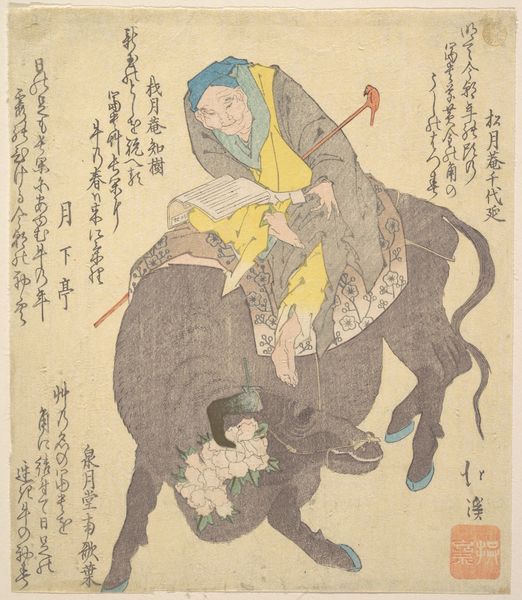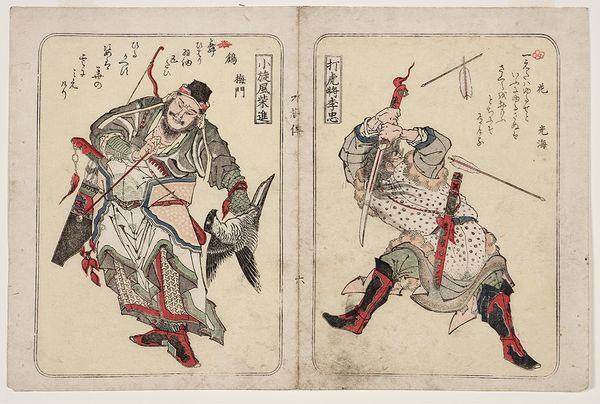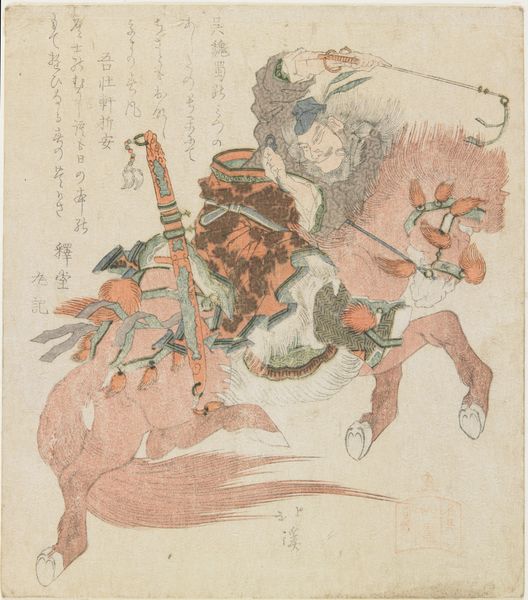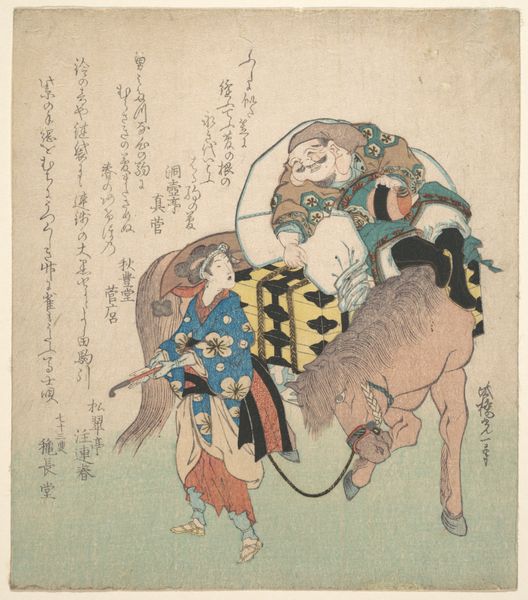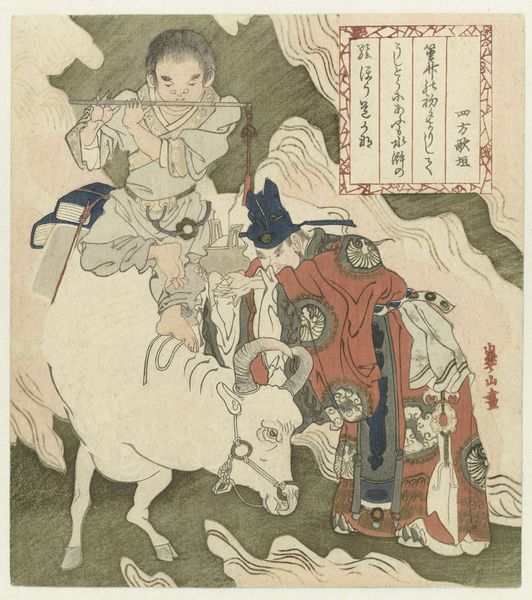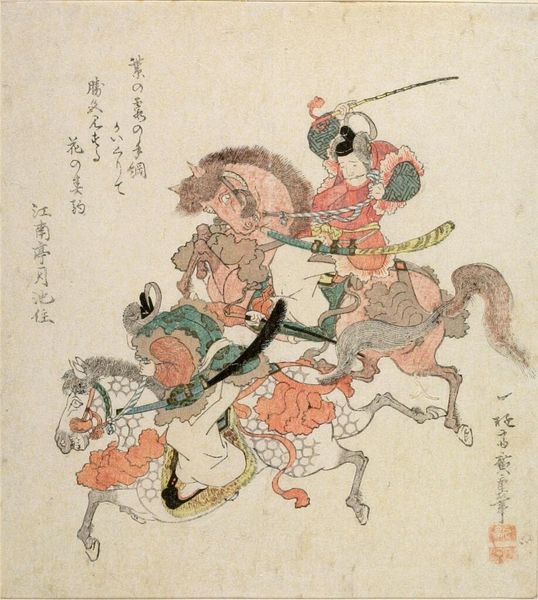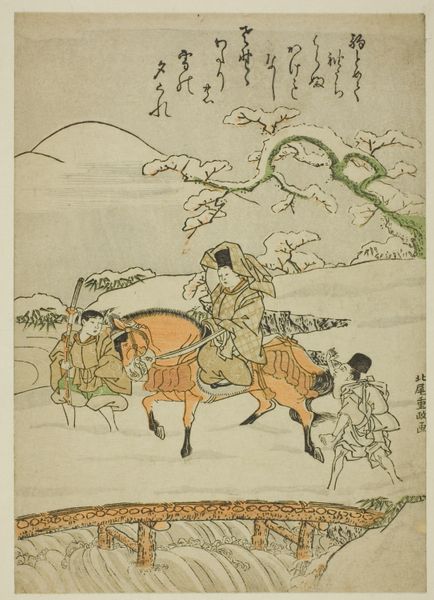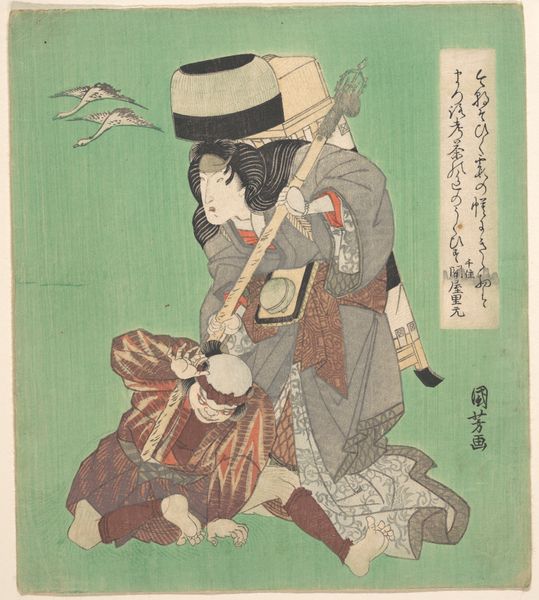
Dimensions: height 208 mm, width 183 mm
Copyright: Rijks Museum: Open Domain
Curator: I’m immediately struck by the wild energy—it feels almost chaotic, yet undeniably dynamic. The lines, the posture of the rider… What is this, exactly? Editor: This is a woodblock print from the late 19th century, created around 1890-1900 by Yanagawa Shigenobu. It is entitled “Miura no Ôsuke te paard”, and you can see it here at the Rijksmuseum. Curator: Ôsuke on horseback, indeed. Tell me more about Miura no Ôsuke. The horse seems to personify the brute force of nature while the rider has this look like a fierce god riding wind. The man on the horse is holding some sort of stick or weapon…is it symbolic of power or social control in a traditional Japanese narrative? Editor: Absolutely. Figures like Miura no Ôsuke were often portrayed as paragons of military virtue, reflecting samurai ideals that were undergoing a resurgence during the Meiji Restoration. Consider that woodblock prints themselves, once cheap, popular art, gained a new appreciation among collectors as Japan engaged with the West. Their visual language evoked nostalgia for an imagined feudal past. The way that Ukiyo-e captured these powerful figures also helped form perceptions that persist today, particularly of the samurai class. Curator: And that's really powerful. The upward thrust of the horse and rider create a kind of visual mythology for the emerging national identity. We're not simply seeing a portrait, but a crafted icon that blends heroism and cultural aspirations. Look at how the textures vary: rough strokes depict the mane and tail while flatter planes make up the figure's clothing, all working to enhance symbolic resonance. Editor: The distribution and the celebration of the historical heroes in a format like woodblock printing underscore how history is mobilized to solidify national feeling. In a period when Japan was intensely modernizing and also asserting itself on the global stage, seeing these figures reaffirmed distinctiveness while also asserting power. The iconography becomes tied up with ideas of Japan's martial spirit, part of the language being formed during this intense time of political change. Curator: This certainly lends a fresh layer to this artwork, seeing it both as art and social propaganda. It is not just Ôsuke on a horse—it embodies values, national dreams, perhaps even unspoken anxieties. Editor: Exactly! So the next time you look at “Miura no Ôsuke te paard”, perhaps it will offer you an idea about how collective identities get manufactured in ways that reflect socio-political context.
Comments
No comments
Be the first to comment and join the conversation on the ultimate creative platform.
